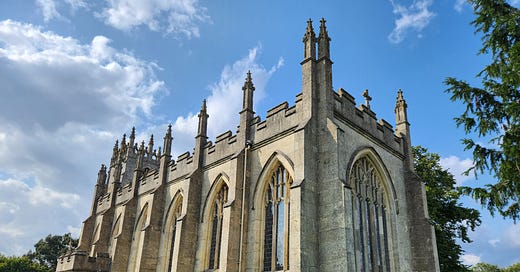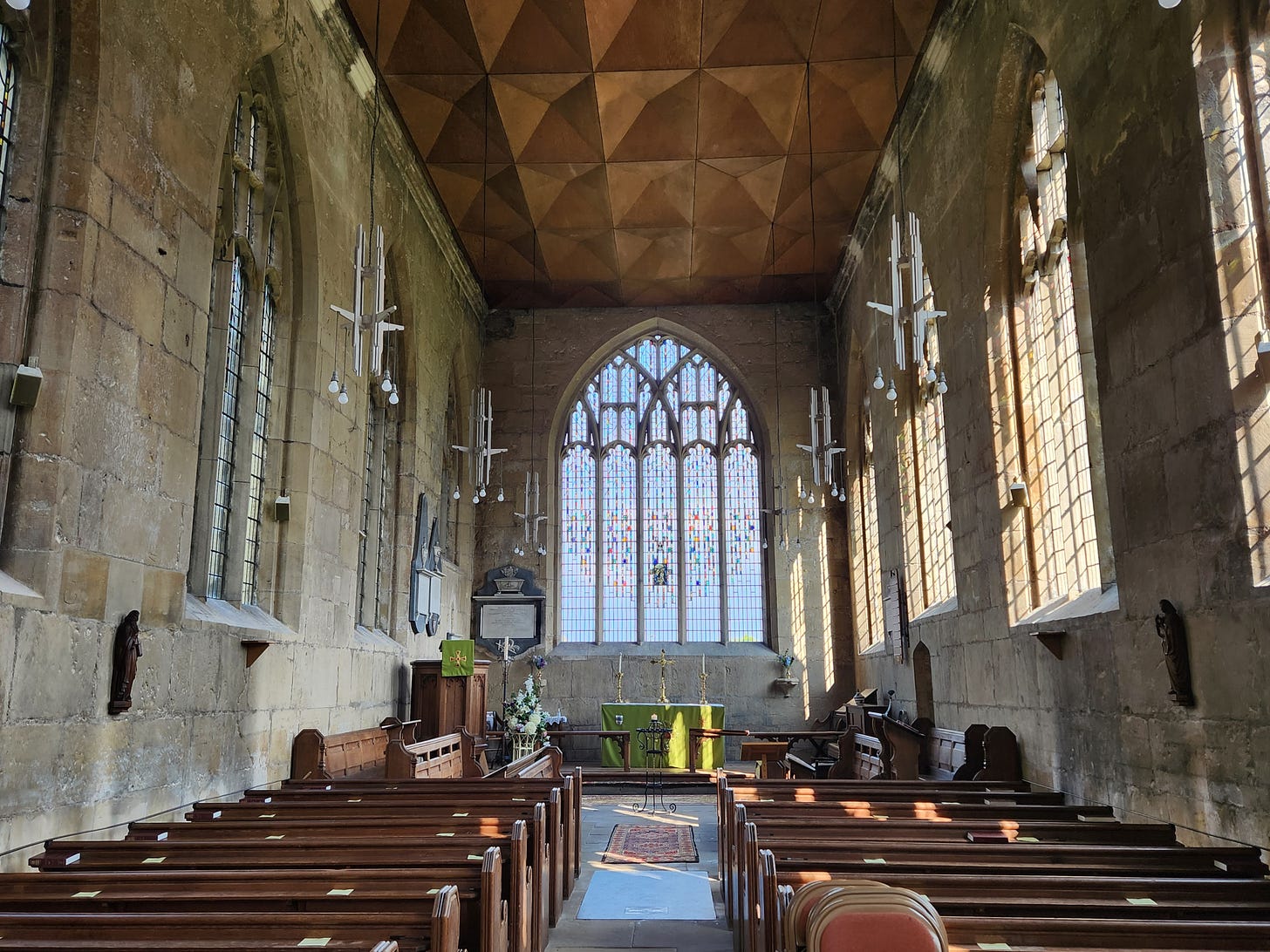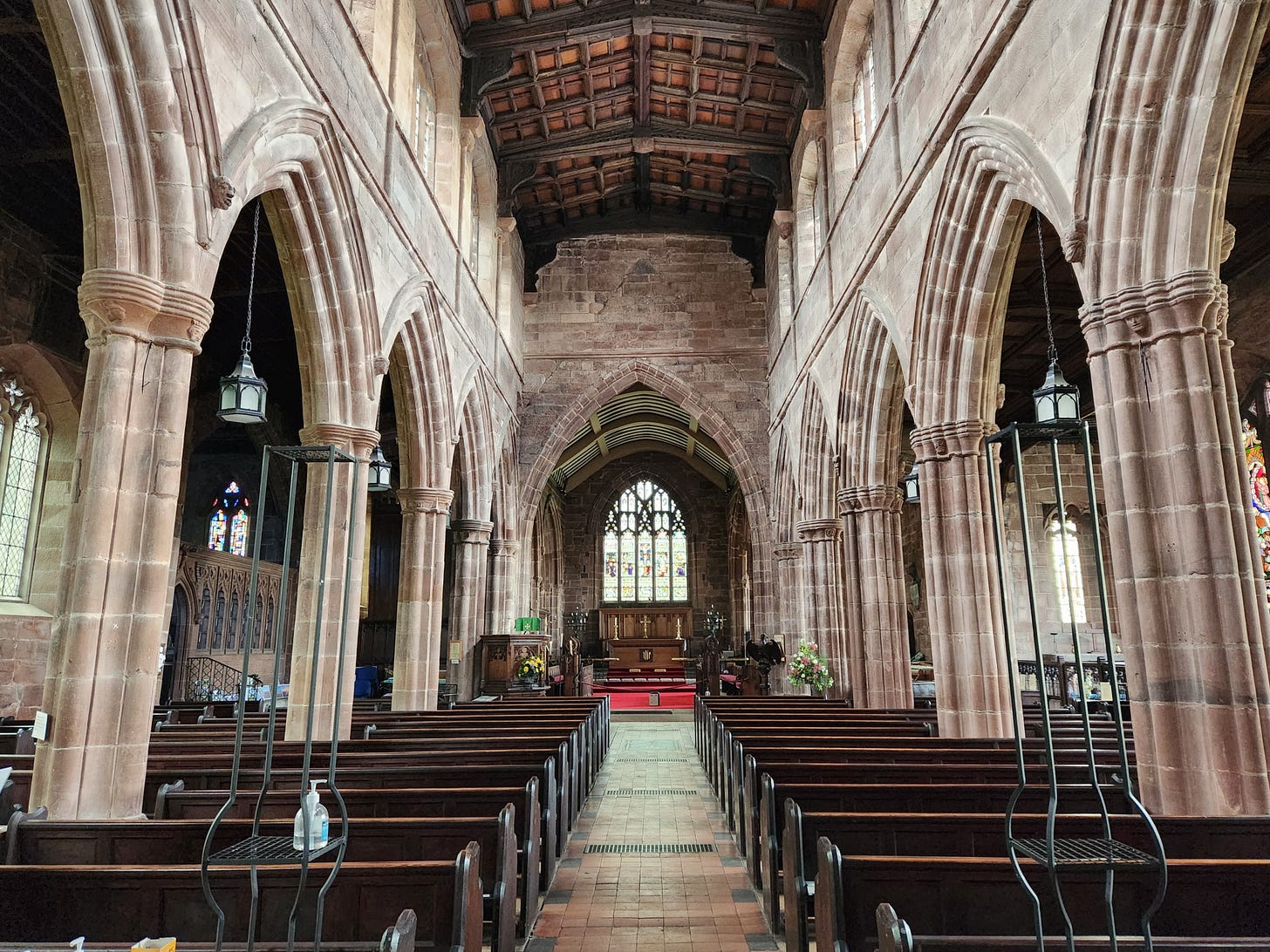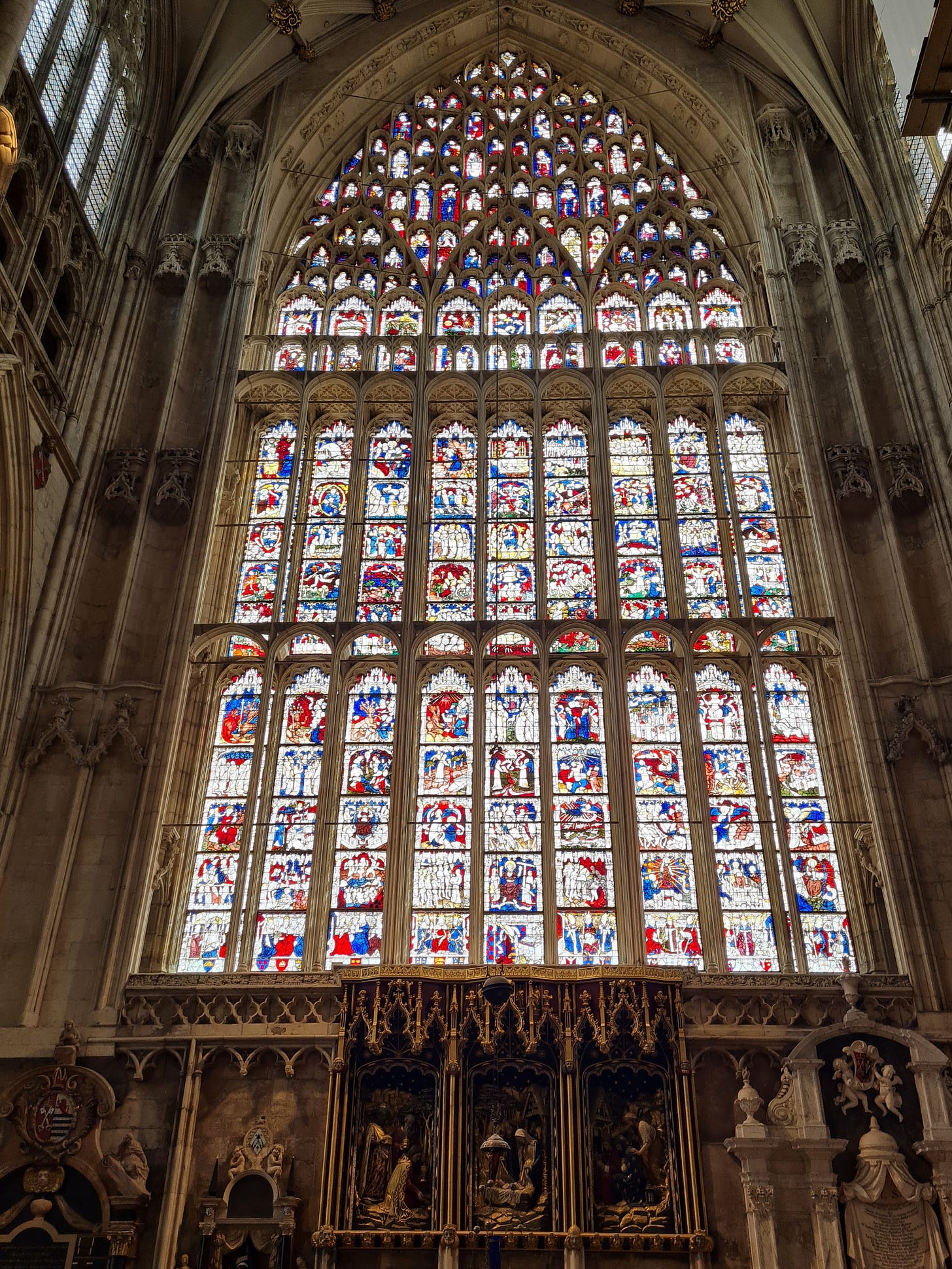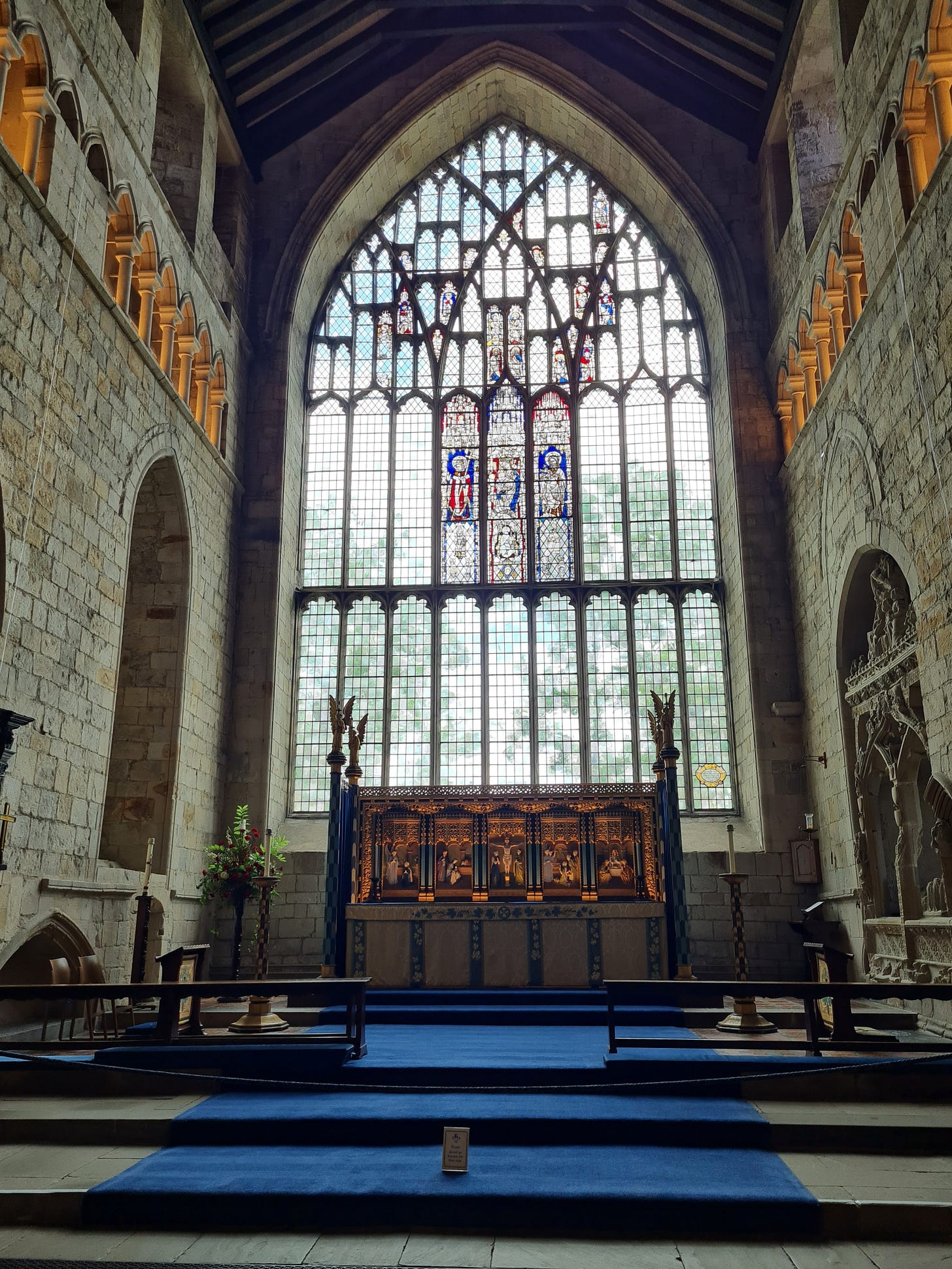The final stage of Gothic is peculiarly English, it doesn’t occur in Scotland, or France, for example. It is instantly recognisable once you know what you’re looking for.
Perpendicular is characterised by vertical lines and grids. These can extend along a whole facade or window. Windows became bigger, letting in more light; columns more delicate and ceilings higher, with fan vaulting. Churches are decorated externally with pinnacles and what can look like battlements. Towers were built higher and monasteries competed with each other for magnificent west towers.
This church, Skirlaugh (East Yorkshire), built in 1401, is regarded as a classic Perpendicular church in the small category. Other than being ravaged by the Reformation and later Victorians in regard to internal decoration, it exemplifies Perpendicular (often called “Perp” for short).
A large east window, in a Perp style; multiple windows on both sides to allow in light, and pinnacles on the outside.
This church, Great Budworth in Cheshire, has the columns and height of a larger church, with a Perpendicular east window too.
Windows have two defining characteristics; a grid pattern composed of rectangles and also the curving lines of arches which cross over the grid.
This is the east window at York Minster, made in the early 15th century; it covers the book of the Apocalypse in its subject matter. You can see the rectangles here, with little arches inside them.
This window at Cartmel Priory (Cumbria) has lost most of its medieval glass so you can see the structure more easily. Notice the “ghost” arches crossing over the grid pattern.
In painting, the same rectangular format was followed, and each panel had a cusped arch at the top. On these 15th century screen paintings from Bunbury (Cheshire), you can see the shape of the arch at the top in the paint; there would have been a carved wooden frame here which has now disappeared.
Keep reading with a 7-day free trial
Subscribe to Incola ego sum in terra to keep reading this post and get 7 days of free access to the full post archives.

